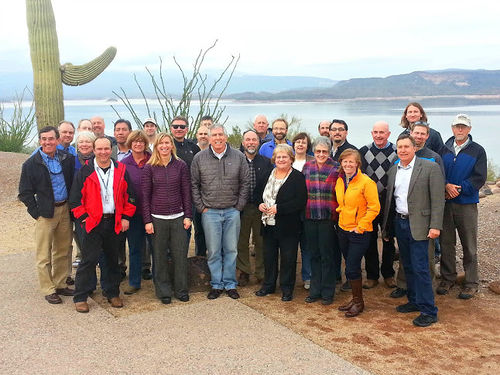|
In order to comply with the consultation requirement of the Grand Canyon Protection Act of 1992, the 1996 EIS recommended formation of a federal advisory committee. The Transition Work Group was formed to operate until such time as a federal advisory committee could be formed, and a record of decision (ROD) signed by the Secretary of the Interior to initiate a process of "management" (operating criteria for unbiased scientific research and data collection) whereby the effects of dam operations on downstream resources would be assessed. Meetings were held with representatives from the cooperating agencies and public interest groups who provided comments on the criteria for development of reasonable alternatives for the EIS.
The transition group worked on a variety of issues including a long-term monitoring and research program to ensure Glen Canyon Dam is operated in a manner consistent with protecting the downstream environment as well as implementation and management of operations and monitoring in consultation with broad-based interests.
The ROD was signed by the Secretary of Interior in October 1996, and in January 1997, Interior Secretary Babbitt signed a Notice of Establishment of the Glen Canyon Adaptive Management Work Group (AMWG), a federal advisory committee. The charter of this group was signed on January 15, 1997.
All of the elements are now in place for an effective, credible adaptive management effort. The AMWG is the key; the TWG providing detailed guidance on issues and objectives; the Science Center to conduct the research and monitoring needed to evaluate operations; and the independent review panel, the outside review necessary to provide the credible science.
The AMWG continues public involvement in the decision-making process and incorporates those stakeholders with interest in the operation of Glen Canyon Dam and downstream resources. By blending the best science and management practices, the AMWG makes recommendations to the Secretary on how to protect the resources and meet the requirement of the law.
The Adaptive Management Program is administered through a senior Department of the Interior official (designee) and facilitated through the Adaptive Management Work Group (AMWG), which is organized as a federal advisory committee and chaired by the designee.
The AMWG held their first meeting on September 10-11, 1997, and officially formed the Glen Canyon Technical Work Group (TWG) as a subgroup to work on tasks charged to them by the AMWG. [2]
| 